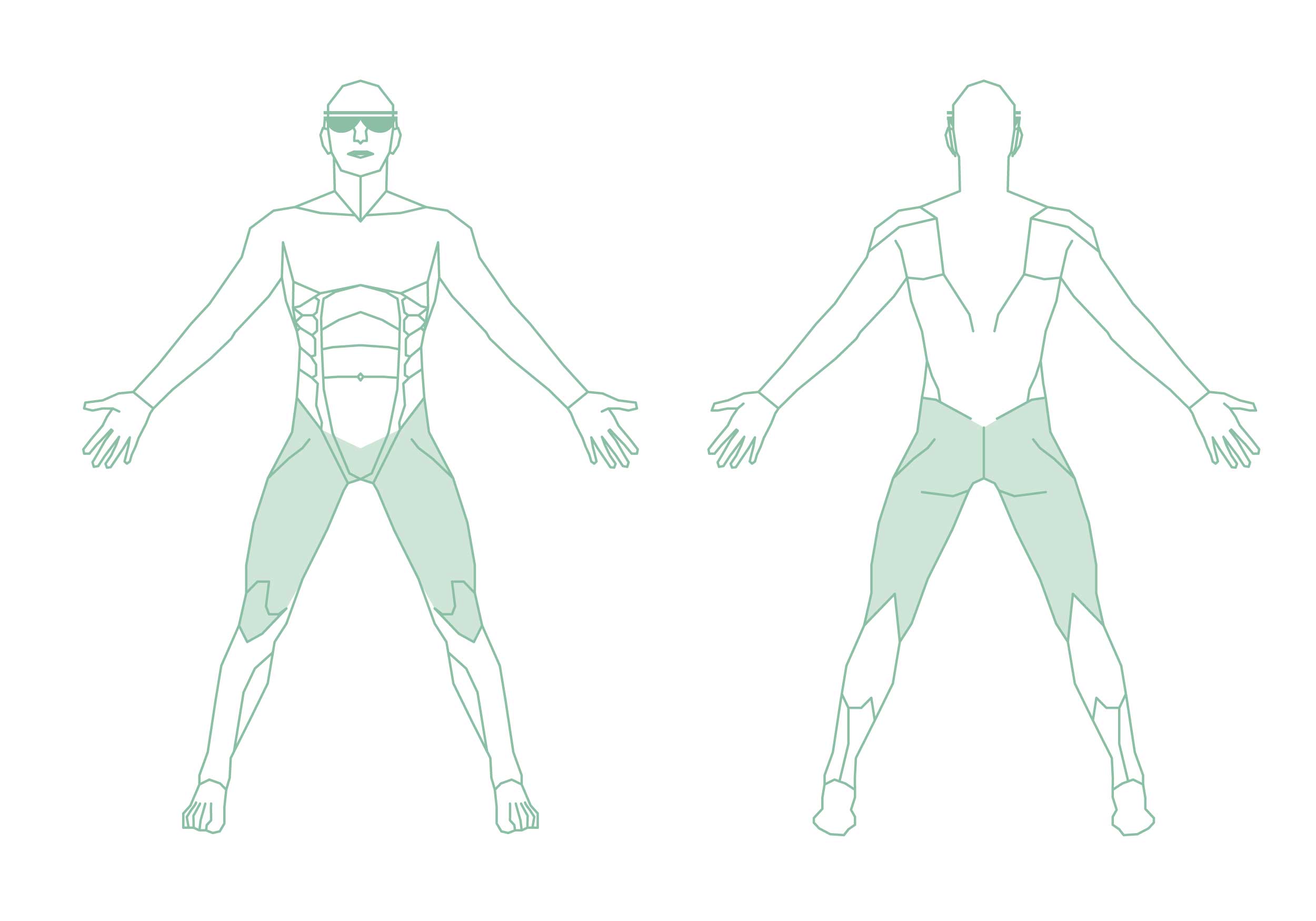PHYSIOTHERAPY FOR KNEE JOINTS, THIGHS, HIPS & PELVIS
Knee joints
Underloading(!) promotes the development of osteoarthritis, i.e. cartilage damage (so-called gonarthrosis). A frequent concomitant of knee joint complaints is the so-called Baker’s cyst, an outpouching of the joint capsule in the direction of the popliteal fossa. In this case, an adapted therapy can help to eliminate restrictions in everyday life or sports again. Overuse syndromes such as patellar tendinitis (jumpers knee) or runners knee (tractus syndrome) can also occur in the musculature. Here we will find out together what kind of training or lifestyle adjustments will help you. Together we make your tendon more resilient! The most well-known injuries in the knee joint include ligament lesions (cruciate ligament tear, collateral ligament injuries), meniscal lesions (Meniscus tear) or also patellar dislocations. Post-operatively, after knee joint arthroscopy or the insertion of an artificial knee joint (knee prosthesis / knee TEP) , it also makes sense to optimize healing through physiotherapeutic measures.
Thigh
Muscle strains or torn muscle fibers can occur here, especially during sport. The major muscle groups that are usually affected here are the inner, anterior and posterior thigh muscles (adductors, quadriceps, sciatica/hamstrings). The most common breaks are here femoral neck fractures. In physiotherapy, we then work on restoring the full resilience of these structures.
Hip joints & pelvis
As in the area of the knee joint, arthrosis (coxarthrosis) is also a common symptom here, which can cause pain and discomfort. can result from congenital deformities (coxa vara / valga, hip dysplasia). Also a hip impingement can promote the development of osteoarthritis. The aim of physiotherapy here is, among other things, to delay or completely prevent the use of an artificial hip joint (hip prosthesis / hip TEP) with targeted exercises and techniques. Groin pain, which can have various causes, should also be mentioned here. Often a pelvic inclination diagnosed. However, this, if actually present, need not cause any discomfort. Pain in the area of the sacroiliac joint should also be mentioned here.
